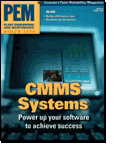Hydrocarbon Solvents
Sunday, March 13, 2011
When I was a project/chemical engineer working in the oil and gas industry 6 years ago, one of my critical tasks is to manage the specialty chemical matters. This is an area which requires a person with chemistry or chemical engineering background. I was fortunate because the company I worked with is attached with a well known and established international specialty chemical manufacturer. Hence, I learned a lot of chemicals and its formulation from the principal company. There are various specialty chemicals available for numerous industrial applications such as corrosion inhibitors, degreaser, scale inhibitors, descaler, deoiler and others. Among the chemicals that I frequently handled is the corrosion inhibitor. The corrosion inhibitor is used in the internal pipeline chemical cleaning project awarded to us to lengthen the lifespan of the gas  and condensate pipelines from corrosion threat. The corrosion inhibitor concentrate, which comes in drums of 200 liters will be then blended with either water or hydrocarbon solvents to the desired concentration. The chemical blending was made on-site by the staffs. After the blending is completed, I will check the final corrosion inhibitor blending via bottle and emulsion test. Blending the chemical using water is not as complicated as using hydrocarbon solvents.
and condensate pipelines from corrosion threat. The corrosion inhibitor concentrate, which comes in drums of 200 liters will be then blended with either water or hydrocarbon solvents to the desired concentration. The chemical blending was made on-site by the staffs. After the blending is completed, I will check the final corrosion inhibitor blending via bottle and emulsion test. Blending the chemical using water is not as complicated as using hydrocarbon solvents.
When blending using hydrocarbon solvent, I need to identify which solvent best suits the chemical. I also need to consider the economic as well as the safety aspect. Hence, for me, there is an importance to know about hydrocarbon solvents. One way to learn about it is from the material safety data sheet (MSDS). Besides that, I also always refer to the notes and my principal for further explanation or analysis.
Basically, there is a wide range of hydrocarbon solvents which include aliphatics, paraffins, aromatics, blends, mineral spirits and others. There are also daily used items that relies on hydrocarbon solvents such as adhesives & sealants, paints & coatings, dry cleaning fluids, insecticides, edible oils and tyres. A simple and common example is when we mix kerosene into the paint concentrate when we paint the walls of our house. Kerosene is one type of popular hydrocarbons, which is also the fuel for aeroplanes.
On top of that, other application of hydrocarbon solvent includes cleaning or dissolving water-insoluble substances such as greases and oils. Due to their high toxicity and persistence in nature, their use in industrial processes is restricted. The solvent must also be stored safely in a dry cool shady place and well ventilated area, far from heat and sunlight. This is to avoid them reaching their flash points which may lead to possible explosion.
It was really nice experience learning and being exposed to the specialty chemicals and various hydrocarbon solvents. It is indeed a huge market and a profitable area to be in. Don't you think so?
Labels: Chemical, Chemistry, Environmental, hydrocarbon solvents, Learning Curve, Oil and Gas
posted by Kipas Repair JB @ 12:43 AM,
,
![]()
Outsourcing Chemicals for your work
Wednesday, May 19, 2010
 I can still recall when I prepared the technical tender documents and performed bottle test for several chemicals/resins in few South China Sea Petronas offshore platforms, I was exposed to new chemicals. A lot of them were very complicated and difficult to pronounce or to write. Not just that, for other project, I have to formulate our own chemicals and blend them to be a good soluble solution which can dissolve in petroleum condensate in order to clean up the stubborn internal petroleum and gas pipeline scale and fouling. Well, that was for a downstream project which I lead few years ago. It was really interesting and challenging experiences. As I was in charge mainly on chemical department, in order to do that, I needed to prepare few chemicals and constantly consult with our international partner. Our principal provided superb advice and support. However, there were times where they asked us to outsource for chemicals locally as they were cheaper and immediately available compared to importing them from overseas and messing up with the tedious lengthy custom process.
I can still recall when I prepared the technical tender documents and performed bottle test for several chemicals/resins in few South China Sea Petronas offshore platforms, I was exposed to new chemicals. A lot of them were very complicated and difficult to pronounce or to write. Not just that, for other project, I have to formulate our own chemicals and blend them to be a good soluble solution which can dissolve in petroleum condensate in order to clean up the stubborn internal petroleum and gas pipeline scale and fouling. Well, that was for a downstream project which I lead few years ago. It was really interesting and challenging experiences. As I was in charge mainly on chemical department, in order to do that, I needed to prepare few chemicals and constantly consult with our international partner. Our principal provided superb advice and support. However, there were times where they asked us to outsource for chemicals locally as they were cheaper and immediately available compared to importing them from overseas and messing up with the tedious lengthy custom process.This was when I normally look out for local chemical manufactures and get the best deal from them. Miraculously, they have in their stock weird and complex chemicals that we need. Hence, it is good to work with reliable and resourceful chemical manufactures.
Part of my job scope back then was also handling bioremediation works at oilfield and refineries.
 For this, we were required to formulate special chemical that can detoxify and in-capsulate heavy metals and hydrocarbons when necessary. Hence, we turned to our bio chemical manufactures alliances which helped us complete our biochemical ingredients.
For this, we were required to formulate special chemical that can detoxify and in-capsulate heavy metals and hydrocarbons when necessary. Hence, we turned to our bio chemical manufactures alliances which helped us complete our biochemical ingredients.It is very important to know where to outsource for the chemicals and biochemicals that you need for either research or real industry application. One of my favourite source to seek for such information is sourcepoint.com. It is a global business to business product and service sourcing directory based on the United Nations Standard Products and Services Codes which provides an accurate efficient classification of goods and services. From this site, I am able to directly contact manufactures and distributors of almost anything worldwide.
Currently, as a Ph.D in chemical engineering student studying reaction/catalysis engineering and using acid catalyst, I can efficiently search for the right catalyst from all over the globe. For example, under the “Chemicals including Bio chemicals and gas materials”, I can find “Acid Catalysts”. So, I just click at “Acid Catalysts” and I will get a row of results on companies offering acid catalysts.
I’m not sure about you and what products you are interested in. If you are in need of any chemicals, why not search it yourself there.
Labels: Chemical, Chemical Engineer, Chemical Engineering, Chemistry
posted by Kipas Repair JB @ 12:58 AM,
,
![]()
Free 10 aps: NIOSH Chemical Hazards Pocket Guide for iPhone
Saturday, March 27, 2010
"NIOSH Chemical Hazards Pocket Guide for iPhone"
This chemistry/chemical engineering iphone application is developed by a company called ThatsMyStapler, a company from Canada. It's too bad that I don't use an iPhone (I really want to use one now...anyone want to sponsor me?). Since I have not use the application, I can't really provide my insight on this product. However, here is some part of the press released with regard to the new Chemical Hazards Pocket Guide...
 Edmonton, CA Mar 26, 2010
Edmonton, CA Mar 26, 2010[prMac.com] Edmonton, Canada - ThatsMyStapler today is pleased to announce the release of the NIOSH Chemical Hazards Pocket Guide for Apple's iPhone and iPod touch.
"There are now several implementations of the NIOSH Pocket Guide (NPG) in various forms available in Apple's online store, but our application has a pleasing native interface and features we believe users will appreciate the first time they use it" said Steven Farkas, president of ThatsMyStapler.
"The iPhone is very capable of reading many PDFs and HTML pages available on the internet, but we have found that quite often there is a fair bit of panning, pinching and zooming required to read files intended for PC Desktops. Users will find the information and ancillary references in this NPG reformatted to an easy readable format set to the iPhone's display."
The National Institute for Occupational Safety and Health (NIOSH) Chemical Hazards Pocket Guide provides a concise source of general industrial hygiene information for workers, employers, and occupational health professionals. The industrial hygiene information found in the Pocket Guide assists users to recognize and control occupational chemical hazards. As a fully tested and recommended application by Laboratory Safety personnel, users will find it easy to use with full use of the iPhone's native look and feel throughout.
* Fully indexed and searchable chemical list by name, CAS# or RTECS#
* Full text of all referenced DOT Emergency Response Guides
* Viewable International Chemical Safety Cards (PDF)
* All NIOSH appendices
* Saved History of previously viewed Chemicals
* Native iPhone look & feel throughout
* No Internet connection required
Device Requirements:
* iPhone and iPod touch
* Requires iPhone OS 3.1.2 or later
* 21.6 MB
Pricing and Availability:
ThatsMyStapler's NIOSH Chemical Hazards Pocket Guide 1.0 is now available from Apple's App Store at the introductory price of $4.99 (USD) in the US and Canada.
If you want to have this super cool application, I have workout with MyStapler to give away 10 NIOSH Chemical Hazards Pocket Guide 1.0 free of charge. You can get it and use it straight away in your iPhone.
How can you get it?
All you need to do is simple leave a comment under this post. Just share with us what you think about this application. I have 10 coupons (that can make you get this application free) which is valid for 30 days starting from today. For the first 5 people who leave the comment (regardless you have an iphone or not), I'll email you one coupon each. After that, I'll post all 10 codes here in this post for others to grab.
For further information on iPhone's NIOSH Chemical Hazards Pocket Guide application, please visit: http://www.thatsmystapler.com/npg/

More products to come
Thatsmystapler representative have informed me that they are working on 2 more applications that are closely related to us, chemical engineers. I don't want to reveal their projects right here right now. If you want to get updated on their upcoming projects, stay tune with Chemical Engineer World blog (this blog).
p/s: Steve, thanks for giving me the opportunity to share this powerful information here.
Labels: Chemical Engineer, Chemistry, iPhone, Technology
posted by Kipas Repair JB @ 10:33 PM,
,
![]()
Natural Memory Foam Versus Synthetic Memory Foam
Sunday, March 14, 2010
As a normal human being, we need to sleep few hours a day. That includes me and I never care where or on what I sleep on. The most important thing is I can sleep peacefully for few hours and revive my energy before facing a new fresh day for new life and work.
However, I learn something important two days ago which imperatively associates with our health and sleeping activity. I came across a new terminology which is called memory foam. I have not heard about it before, so as a chemical engineer, it really caught my interest to learn and research more about it. Do you know what memory foam is? Basically, memory foam is polyurethane with additional chemicals increasing its viscosity and density. It is also often referred to as visco-elastic polyurethane foam.
 I believe a lot of the mattresses that we use nowadays are made of memory foams. To be specific, they are made of synthetic memory foams. Do we care? Honestly I did not bother about it. Do we know the risk and danger of it? Since, I did not care, I was not aware of any treat it has. However, I was very surprised after learning the potential risk from synthetic memory foams or shall I call it mattress chemical?!
I believe a lot of the mattresses that we use nowadays are made of memory foams. To be specific, they are made of synthetic memory foams. Do we care? Honestly I did not bother about it. Do we know the risk and danger of it? Since, I did not care, I was not aware of any treat it has. However, I was very surprised after learning the potential risk from synthetic memory foams or shall I call it mattress chemical?!It is a fact that toxins can now be found in nearly all common household products; from carpets to microwaves, paints, couches, mattresses and baby cribs to children's clothing. Many of these toxins accumulate in the body and are never expelled. Unfortunately, normal synthetic memory foam, yes the one we use to sleep on, also contains some level of toxic and may contribute to the level of toxic in our body.
When you sleep, your body regenerates and recharges itself. At this time, prolonged exposure to poisonous volatile organic compounds and toxic chemicals when your body is in this vulnerable state should not be taken lightly. Now, you really need to pay special attention on this matter.
New Mattress / Bed Illness Report PageThough, this information is not widely exposed, it has appeared in a TV news. Check out the following video which shares how serious and how much of chemicals do we have in our blood.
Reports of health problems linked to chemicals in new mattresses.
Unlike mattresses of 40+ years ago, mattresses today are manufactured with increased amounts of petroleum based compounds in the form of foams, plastics, and a variety of volatile chemicals (including controversial flame retardants). Research and personal accounts suggest people can become ill by the repeated and continuous exposure to these low level chemicals during the sleep process. This is especially true for people who have lower levels of liver detoxification enzymes known as cytochrome P-450 (thereby allowing chemicals to build up in their blood to higher than normal levels). Since research now shows these chemicals are in fact evaporating from the materials used to make modern day beds and that some are carcinogenic and mutagenic compounds, the next important step is to publicize any personal accounts of illnesses people develop immediately following a new bed/mattress purchase. Health effects caused by petroleum chemical exposure can weaken or damage the immune and nervous system. Interestingly, autoimmune disorders have also been linked with exposure to petroleum-based chemicals and have been found to be the underlying etiology of many common health problems today (soft tissue damage, arthritis, etc).
Source: http://www.chem-tox.com/beds/reports/index.htm
So, how bad, how much chemicals and what chemicals are there inside synthetic memory foam? I can’t answer how much chemicals are there inside synthetic memory foams, but typical synthetic memory foam contains the following chemicals:
• 1,1,1, 2-Tetrachloroethane
• Acetone
• Dimethylformamide
• Methyl benzene (toluene)
• Methylene dianiline
• toluene–neoprene
• Vinilideine chloride
Those chemicals are readily exposed to us and we cannot afford them to penetrate our body in anyway. If synthetic memory foam is that bad, what should you do?
Simply switch to natural memory foam. Natural memory foam contains zero toxic chemicals. It only contains natural ingredients such as:
• Cone essence
• Emulsion of Hevea brasiliensis milk in water
• Fats
• Hevea brasiliensis milk
• Hydrolyzed corn
• water
To view complete list of chemicals in various type of synthetic memory foams and natural memory foams, you can refer to myessentia.com/research/glues-toxic-components.
This information, I hope has exposed the real thing and it is now totally up to you to decide on the best for you and your family. The best option for mattresses is those made from natural memory foam.
Labels: Chemical, Chemistry, Learning Curve, renewable, Research, Technology
posted by Kipas Repair JB @ 7:00 PM,
,
![]()
1st Annual World Congress of Catalytic Asymmetric Synthesis-2010 (WCCAS-2010)
Tuesday, March 09, 2010
As a person who is involve in reaction and catalysis engineering, I feel I need to share this announcement. For the first time ever, the Annual Congress of Catalytic Asymmetric Synthesis is going to be held. This is the first such conference being organized and to know further details, please read the following which was adopted from an email from the organizer:
What is WCCAS about?
The 1st Annual World Congress of Catalytic Asymmetric Synthesis-2010
(WCCAS-2010) will be held from May 19 to May 21, 2010 in Beijing, China,
with a theme of ‘Create Bioactive Molecules Green and Economically’. This
is a focused event on Catalytic Asymmetric Synthesis, it aims to stimulate
interactions among academia, industry and researchers in this field to
exchange up-to-the-minutes information and promote their novel
technologies. On behalf of the organizing committee of WCCAS-2010, we
cordially invite you as a speaker at Track 4-2: Asymmetric Synthesis of
Biocides or Pesticides to present and contribute your invaluable
experience.

Scope
WCCAS-2010 is expected to greatly contribute to the promotion of new concepts for the development of efficient methodologies for catalytic asymmetric synthesis and its practical applications. The topics will reflect this general theme, placing emphasis on aspects that are common to all areas of catalytic asymmetric synthesis and the type of reaction involved:
Track 1: Novel Technologies for Catalytic Asymmetric Synthesis
Track 1-1: Rational Ligand Designs and Novel Catalyst Screening
Technologies
Track 1-2: Microwave/Ultrasonic/Photo Assisted Asymmetric Catalysis Track
1-3: Practical Chiral Catalyst Immobilization
Track 1-4: Nanotechnologies in Asymmetric Catalysis
Track 1-5: Non Air Sensitive or On-water Catalysis and Solid Phase Catalysis
Track 2: Organometallic Chiral Catalysts in Asymmetric Transformations
Track 2-1: Catalytic Asymmetric Alkylation
Track 2-2: Catalytic Asymmetric Additions
Track 2-3: Catalytic Asymmetric Hydrogenation and Reductions
Track 2-4: Catalytic Asymmetric Oxygenation
Track 2-5: Catalytic Asymmetric Carbon-Carbon Bond Formation
Track 2-6: Catalytic Asymmetric Epoxidation
Track 2-7: Catalytic Asymmetric Aziridination, Cyclopropanation and
Diels-Alder Reaction
Track 2-8: Catalytic Asymmetric Carbonylation
Track 2-9: Catalytic Asymmetric Amination and Introduction of Other Hetero
Atoms
Track 2-10: Catalytic Asymmetric Polymerization Reactions

Track 3: Enantioselective/ Diastereoselective Organocatalysis
Track 3-1: Chiral Lewis Base Organocatalysts
Track 3-2: Chiral Bronsted Acid Organocatalysts
Track 3-3: Peptide Based Chiral Organocatalysts
Track 3-4: Phase Transfer Chiral Organocatalysis
Track 3-5: Other Organocatalysis in C-N, C-O and C-C Bond formations
Track 4: Applications of Catalytic Asymmetric Synthesis
Track 4-1: Asymmetric Synthesis in Drug Discovery and Processing
Track 4-2: Asymmetric Synthesis of Biocides or Pesticides
Track 4-3: Synthesis of Chiral Unnatural Amino Acids and other Natural
Products
Track 4-4: Enantioselective Synthesis of Analytical Chiral Compounds and
Intermediates
Track 4-5: Asymmetric Synthesis of Optical and other Special Functional
Materials
Track 5: Biocatalysis for Asymmetric Transformations
Track 5-1: Mild to Extremophilic Enzymatic Catalyzed Transformations
Track 5-2: Enzymatic Catalytic Degradations of Biopolymers and Chemical
Polymers
Track 5-3: Microbial and Antibody Catalyzed Asymmetric Reactions
Track 6: Business Development for High Value Chiral Molecules
Track 6-1: Enabled Enantioselective Catalysts on Market
Track 6-2: Purification and Analytic Instrumentation of Enantio-pure
Compounds
Scientific Program
The scientific program will consist of plenary and keynote lectures,
approximately 30 sessions, exhibition and a poster session.
More program information can be found at:
www.bitlifesciences.com/wccas2010
Abstracts of the lectures and posters will be printed in the Conference
Proceedings, which participants will receive at the registration desk and
is included in the registration fee.

Location
The capital city of the People’s Republic of China, Beijing is a
fast-growing, dynamic metropolis that, while courting foreign businesses
and visitors, maintains a firm grip on its rich cultural heritage. Beijing
made history in 2008 with the first Olympic Games ever to be held in
China. The conference will be held in Beijing International Convention
Center (BICC) which is located within the magnificent Asian Games Village.
It is one of the Chinese biggest facilities specifically designed for
conferences and exhibitions, comprising 50 conference halls and meeting
rooms equipped to serve a wide variety of purposes with the capacity from
10 up to 2500 people.
Looking forward to seeing you in Beijing in May, 2010
Sincerely Yours,
Ryan
Program Coordinator
26 Gaoneng St., R405, Dalian Hightech Zone
Dalian, LN 116025, China
Tel: 0086-411-84799609-811
Fax: 0086-411-84799629
Email: ryan@webbitmail.cn
Website: http://www.bitlifesciences.com/wccas2010
1. Are you interested in delivering a speech in this congress? Which session?
2. Would you like to chair or co-chair any session of this conference?
Session details PS: http://www.bitlifesciences.com/wccas2010/program.asp
Labels: Chemical Engineering, Chemistry, Conference, Review
posted by Kipas Repair JB @ 2:51 PM,
,
![]()
1st German-Singaporean Symposium on Catalysis
Tuesday, November 17, 2009
I participated in the 1st German-Singaporean Symposium on Catalysis on the 2nd of November 2009. My supervisor brought me along after being invited to the symposium. It was my first visit and outing after registering as a Ph.D student last July.
From this symposium, I was hoping to learn as much as possible from the experts, scientists and researchers from both German and Singapore. The event took place at Biopolis Matrix, Singapore. The hall was full with students (whom I presumed are all researchers in the field of catalysis engineering sciences).
 There were several topics that caught my interest while some did not. Those were the one related to Oxidative Coupling of Methane (OCM) which I did for my masters research 8 years ago. Unfortunately, nothing was related to my current Ph.D topic, but that's fine. I'm glad that exposed to the research atmosphere in Singapore and I really think they are working very hard to establish themselves (in the field of research and development).
There were several topics that caught my interest while some did not. Those were the one related to Oxidative Coupling of Methane (OCM) which I did for my masters research 8 years ago. Unfortunately, nothing was related to my current Ph.D topic, but that's fine. I'm glad that exposed to the research atmosphere in Singapore and I really think they are working very hard to establish themselves (in the field of research and development).2nd Day - Technical Visit
The second day was really exciting and I was looking forward for it. It was the technical visit session. We gathered at Atrium Hotel and with the entire German professors, we were brought to Institute of Chemical Engineering Sciences (ICES), Jurong Island, Singapore.
 One of the professor from German delivering his presentation (1st day)
One of the professor from German delivering his presentation (1st day) Biopolis Matrix from the side (1st day)
Biopolis Matrix from the side (1st day) Hanging some memories on the wall... :)
Hanging some memories on the wall... :) Check out the name of the meeting rooms in ICES - famous scientist names
Check out the name of the meeting rooms in ICES - famous scientist names Scenery from the meeting room in ICES. The meeting room view is spectacular.
Scenery from the meeting room in ICES. The meeting room view is spectacular. Another view from the meeting room. Jurong Island is indeed a powerful force as heavy industry is concerned. Lots of ships, offshore rigs/platform, plants etc.
Another view from the meeting room. Jurong Island is indeed a powerful force as heavy industry is concerned. Lots of ships, offshore rigs/platform, plants etc. This was taken in the meeting room after we got lost during the lab facilities tour.
This was taken in the meeting room after we got lost during the lab facilities tour. Undergraduate students at Nanyang Technological University (NTU) very tentative at their work. It's very impressive that NTU has hundreds of fume cupboards for their students. This is the best lab I've seen so far. Very neat, clean, well organized and beautiful. Every students have their own dedicated fume cupboard to perform their experiments and they are exposed to research in their early undergraduate years. Very impressive.
Undergraduate students at Nanyang Technological University (NTU) very tentative at their work. It's very impressive that NTU has hundreds of fume cupboards for their students. This is the best lab I've seen so far. Very neat, clean, well organized and beautiful. Every students have their own dedicated fume cupboard to perform their experiments and they are exposed to research in their early undergraduate years. Very impressive. The labs are huge and complete with advance equipments. What can a researcher like me as for more if I do research here? They also have 5 units of Nuclear Magnetic Resonance (NMR) and will add another 3 units. I cannot help myself counting the number of Gas Chromatography (GC) they have in their lab. Not to mention, other analytical equipments...
The labs are huge and complete with advance equipments. What can a researcher like me as for more if I do research here? They also have 5 units of Nuclear Magnetic Resonance (NMR) and will add another 3 units. I cannot help myself counting the number of Gas Chromatography (GC) they have in their lab. Not to mention, other analytical equipments... The digital mass balance are also ready to be used by the students...
The digital mass balance are also ready to be used by the students... The German delegates at the Biology Department foyer after meeting up/briefing.
The German delegates at the Biology Department foyer after meeting up/briefing.The symposium was superb. I learned a lot from it. I get to know some key researchers. The technical visits were splendid and meaningful. I loved it. I get to see a very advance research center - that's ICES. On top of that I also managed to learned a lot from the visit to NTU's chemistry lab. The labs are excellent and is destined for quality research. Any researchers from any part of the world will want to work with either of this 2 wonderful and well equipped labs. This clearly shows the investment by the government of Singapore to establish their research and development to a world class standard. The commitment and seriousness are there and I won't be surprised if Singapore becomes a research center for this region.
I managed to do some networking and also learned about Singapore Catalysis Society. This, I hope will help me strengthened my research motivation.
FREE Recommended magazines to get you updated with current engineering news

Labels: Chemical Engineering, Chemistry, Conference, Learning Curve, Research, Seminar, Technology
posted by Kipas Repair JB @ 1:06 AM,
,
![]()
How To Make 100% Natural Soap
Thursday, March 12, 2009
Everybody used soap on a daily basis during shower, to wash hands, to clean stuffs etc. But, do you know how to make a soap? Can you make your own 100% natural soap behind your house or the back yard? Would it be interesting to use your own home made 100% natural soap? You can do just that after you learn how to make your own soap. It's simple and easy. You can use equipments available at your house/kitchen. The most complicated tool is just a mixer but you can always substitute it with your own hand to do the mixing. Apart from that, you need several container and few of them will act as a mixing reactor. Finally, the exciting part is to design and colour your soap creatively according to your taste. Who knows, you can create and sell the soap? That will be exciting... check out the video... and start making one.
Labels: Chemistry, Learning Curve, Video
posted by Kipas Repair JB @ 3:49 AM,
,
![]()
9 Great Chemical Engineering Related Ebooks
Sunday, January 27, 2008
Find EBooks (a site providing a number of free Ebooks), listed a few chemical engineering and chemistry related ebooks which can be very useful reference for students and practicing engineers. All of the ebooks are in PDF format and they are free to download. Most of them are in normal book format while some of them are from bulletin or technical paper. I selected 9 fantastic ebooks which I believe is of great value. Check it out:
1. Centrifugal Compressor
Centrifugal Compressors and Steam Turbines.
2. Media Wiley
Basic Thermodynamics.
3. UIC.edu
A Revision of the Distillation Theory (Part I).
4. CHE.WISC.edu
The Material Balance for Chemical Reactors.
5. Geo Heat
Direct-Use Temperature Requirements: A Few Rules of Thumb.
6. HAZOPS ebook
A hazard analysis and operability study (HAZOPS) is one of the essential topics in Chemical Engineering field. It holds a critical role in both design and operation of a plant or unit process. This HAZOPS ebook has nine chapters, such as introduction, overview, essential elements, methods and examples, reporting and analysis, etc.
7. Material Engineering Ebook-1;
Material Engineering Ebook-2
These ebook explain about structure of materials, property of metals, thermal shocks, brittle fracture and plant materials. The ebooks are suitable for engineering students and professionals.
8. Fungicide information ebook
Fungicide is a type of pesticide. It is intended to kill fungus. Fungicide is commonly used in industry, agriculture and home. Getting right information about fungicide will help us to reduce its adverse effects on health and environment.
These are two household chemicals that are always available in every home. They help moms to keep households clean and hygiene. But do you know that cleaners and polishers contain potential hazards to the whole family? Do you really understand about the chemicals of cleaners and polishers? If not, I think you’d better to check out this free ebook.
If you have more ebooks or other valuable references, please share it with us. If it's good, I'll post it here so that more people can read and use it. Thanks in advance... :)Labels: Chemical Engineering, Chemistry, Cooling Tower, Learning Curve, Research, Review, Study
posted by Kipas Repair JB @ 11:11 PM,
,
![]()
Health: Saturated, Monosaturated and Polysaturated Fat
Sunday, August 05, 2007
As an educated person, we should be wiser in selecting our daily food consumption. By consuming more bad fats via our favourite food, it may affect our life and health in future. Few months back, I realized about this and reduced my chicken meal (for your information I love eating chicken, especially fried chicken, since the past 31 years). Chicken have high content of fats/cholesterol especially under the skin. I'm planning to eat a lot more healthier food with less oil. I want to reduced my BMI (body mass index).
1. A healthy diet includes some fats.
2 Bad fats are those that tend to be solid at room temperature, such as butter or shortening.
3. Monounsaturated and polyunsaturated fats are bad fats.
4. Different types of fats have different calorie counts.
5. All foods labeled "trans fat-free" are healthy foods.
6. Monounsaturated fats, such as olive oil, avocados, peanut butter and many nuts and seeds, can have a beneficial effect on your health when eaten in moderation and when used to replace saturated fats or trans fats.
7. Monounsaturated fats are also typically high in vitamin E, an antioxidant vitamin most Americans need more of.
8. The fats in the foods you eat should not total more than 25 percent to 35 percent of the calories you eat in a given day.
Answers: 1) True; 2) True; 3) False; 4) False. There are 9 calories in every gram of fat, regardless of what type it is. 5) False. Foods labeled trans fat-free may contain saturated fats, or they may be high in sugar and low in nutrients. 6) True; 7) True; 8) True
I would like to recommend a good reading easy to understand information about saturated fat, Monounsaturated and polyunsaturated:
http://www.defence.gov.au/news/raafnews/EDITIONS/4424/health/story01.htm
Enjoyed this post? Subscribe to CHEMICAL ENGINEERING WORLD by email.
Or you can also Subscribe to CHEMICAL ENGINEERING WORLD by RSS.Labels: Chemistry, Health, Oil and Fats
posted by Kipas Repair JB @ 12:32 PM,
,
![]()
General Chemistry Online
Sunday, March 25, 2007
 I stumbled upon an interesting chemistry site which is useful for chemical engineering students and practicing chemical engineers. General Chemistry Online is put together by Fred Senese at Frostburg State University. The site excels in several areas.
I stumbled upon an interesting chemistry site which is useful for chemical engineering students and practicing chemical engineers. General Chemistry Online is put together by Fred Senese at Frostburg State University. The site excels in several areas.
The first is a Common Compound Library. In it, users enter the name of compound and a search engine retrieves data about the molecule, which includes links to PubChem, Webbook and MSDS info. Chime structures and spectra are included where relevant. Second is a section entitled Exam Survival Guide. It provides practice exams and "ten ways to pass your next exam" that will be popular with students (sometimes chemical engineering students have some problem understanding chemistry!).
A glossary covers many of the terms and can be sorted by topic. Last, a set of Construction Kits help students to "build" chemical equations, convert units, and construct ionic compounds. Clearly a labour of love, General Chemistry Online has been around long enough to be called a classic of web education. I highly recommend this informative and resourceful website. Check it out.
If you enjoyed this post then subscribe to CHEMICAL ENGINEERING WORLD.
Labels: Chemistry, Learning Curve, Study
posted by Kipas Repair JB @ 9:47 PM,
,
![]()
The Author

I’m Zaki. I used to be a project, process and chemical engineer. Few years ago I successfully became a Chartered Engineer (IChemE) and Professional Engineer (BEM). I'm now employed as a chemical engineering educator/researcher/consultant. Hope you like reading my blog. I welcome any feedback from you. My email: zaki.yz[alias]gmail.com. TQ!









